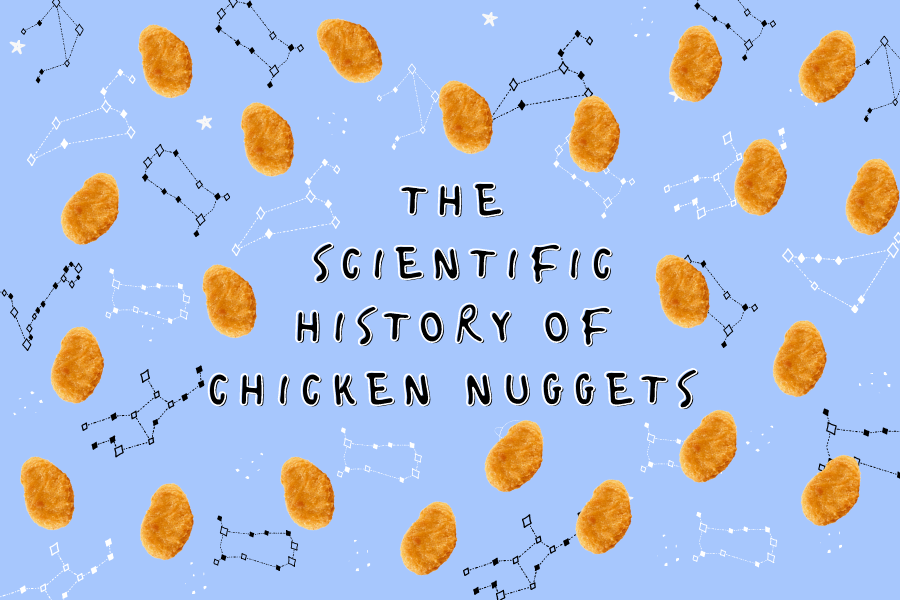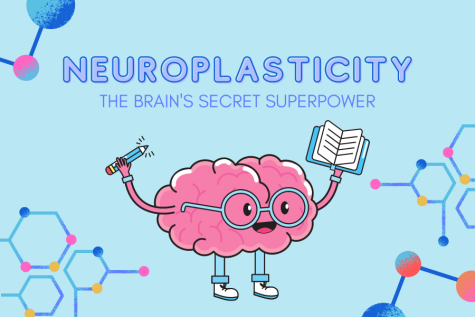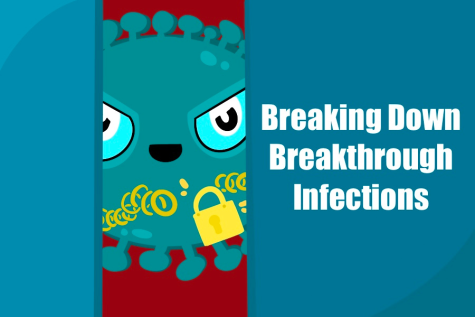A Scientific History of Chicken Nuggets
It is about time that we pay homage to a crucial piece of human history. Hiding in the depths of the frozen section at Trader Joe’s, the glorious chicken nugget is my meal of choice on any day. The glorious chicken nugget has brought me joy in times of hardship. The glorious chicken nugget has gotten me through many late nights of studying for tests. The glorious chicken nugget was my savior at children’s birthday parties where I refused to eat anything else — to seven year-old me, all other food paled in comparison to the glorious chicken nugget. However, we as a society are utterly uninformed about this fabulous food group. I fully intend to correct the egregious oversight by our school system that is refusing to educate Scarsdale students about chicken nuggets. In the spirit of education, I now present a mélange of science and history in honor of the noble nugget.
Flashback to 1955: American citizens were getting tired of plain old chicken, a boring bird that was quickly fading from the dinner table scene. After working so hard to cultivate and market the chicken, the government, scientists, and farmers needed a way to make chicken popular again among the American people. The solution? Chicken nuggets. Robert Baker, a professor at Cornell University, took advantage of the growing processed food industry and dedicated himself to the creation of the noble nugget. Scientists and chefs alike worked to perfect the original nugget, known as the chicken crispie, a novel invention at the time because the newly-invented nugget stuck together during both freezing and frying. Baker accomplished this feat of food science by combining chicken with salt and vinegar to ensure that the nugget would not fall apart. The chicken crispie was rebranded as the “chicken stick” and became a hit throughout Upstate New York.
Budding fast food giant McDonald’s eventually hired Tyson to invent the official McNugget in response to the rapid increase in heart disease throughout the American population due to red meat consumption. Congress recommended eating fish or poultry instead of red meat — once again the nugget came out on top. McNuggets were a smashing success, and still are to this day. Unfortunately, modern-day nuggets may not be as natural as one would expect.
On to some science about the present-day McNugget: tertiary butylhydroquinone (literally how do you pronounce this?), lovingly known within the scientific community as TBHQ, is used to ensure that the McNugget maintains its nugget-like shape. TBHQ is often used in various non-edible petroleum-based products including makeup and perfume, and has been prohibited from use in McNuggets in the United Kingdom. Dimethylpolysiloxane (definitely did not learn about this one in chemistry class) is an ingredient that is slowly being removed from McNugget recipes because it is made out of silicon. Ew.
The history of chicken nuggets is not over just yet. We now know that meat production is incredibly damaging to animals and the environment. With a myriad of vegan options now available to consumers, it appears that the classic chicken nugget might eventually be phased out. However, we may soon be hit with a delicious alternative that combines environmental sustainability with the classic taste of a chicken nugget. The Singapore Food Agency has created “cultured chicken” as an ingredient for nuggets; these lab-made nuggets are sold in a Singaporian restaurant. This new chicken nugget is different from any meat-alternative nuggets; the “cultured chicken” nuggets allow for consumers to eat real chicken without the environmental consequences that come with poultry farming.
In order to create these sustainable nuggets, scientists from the startup Eat Just use a bioreactor, used for growing organic material, and put biopsies from the muscle cells of chickens along with plant nutrients in the device. There are some price concerns about these modern chicken nuggets. In 2019, each nugget cost $50 to make. Nowadays, the price will likely be similar to that of chicken someone would order in a restaurant, a far cry from the price of some McNuggets.
Hopefully this coverage about the past, present, and future of the glorious chicken nugget has provided you with some much-needed information about the science behind, and history of, a delicious childhood classic. The nugget has a bright future, with delicious vegetarian and vegan options as well as sustainable chicken nuggets that do not contribute to increased greenhouse gas emissions.
Works Cited
Aridi, Rasha. “In a Global First, Lab-Grown Chicken Nuggets Will Soon Be on the Menu in Singapore.” Smithsonian Magazine, 4 Dec. 2020, www.smithsonianmag.com/smart-news/lab-grown-meat-earns-approval-be-sold-first-time-ever-180976460/. Accessed 20 Dec. 2021.
Harrison, Turner. “Chicken nuggets: A fried favorite full of history.” Carolina News and Reporter, 26 Nov. 2018, carolinanewsandreporter.cic.sc.edu/chicken-nuggets-a-fried-favorite-full-of-history/. Accessed 20 Dec. 2021.
Rude, Emelyn. “Secrets of the Chicken Nugget: A Surprising History.” Time, 2 Aug. 2016, time.com/4431334/history-chicken-nuggets/. Accessed 20 Dec. 2021.







